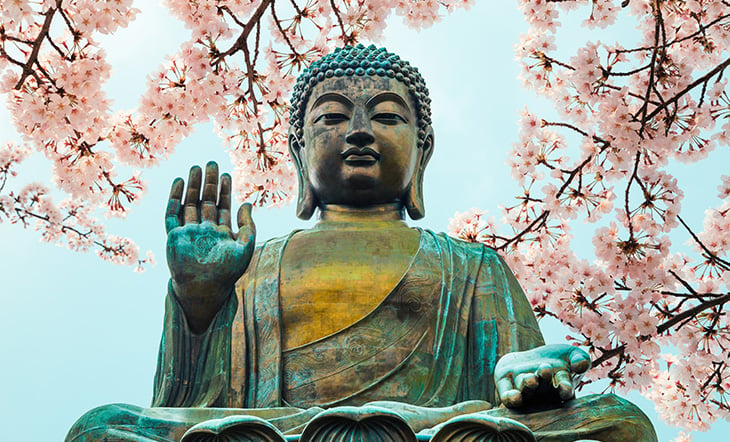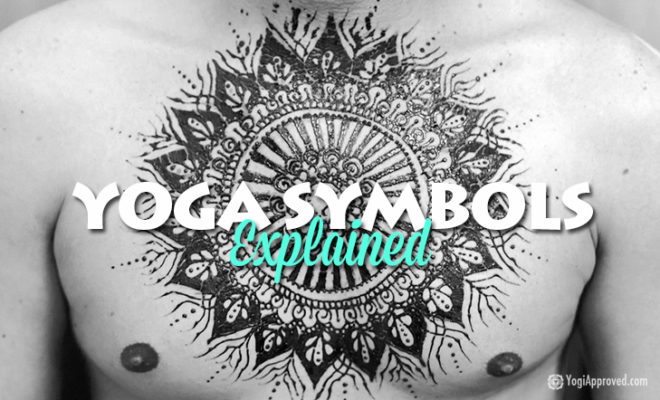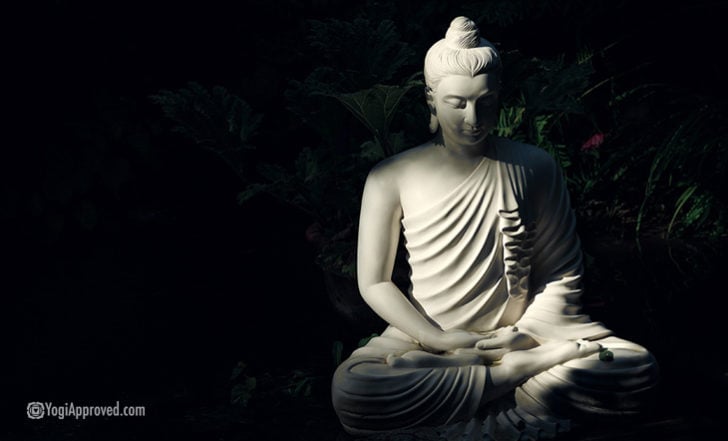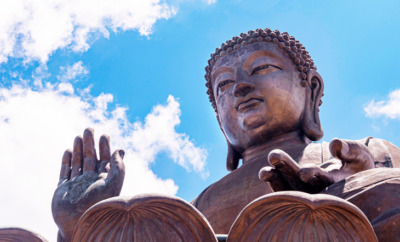Okay Buddha, Let’s Talk About the Second Noble Truth and the Causes of Suffering

buddha causes of suffering
In Buddhism, Four Noble Truths exist, all of which relate to suffering.
Simply put, the First Noble Truth states that suffering exists; the Second Noble Truth looks at the cause of suffering; the Third Noble Truth gives some good news that an end to suffering is possible; and the Fourth Noble Truth gives a path to that end.
We can all agree on the First Noble Truth – suffering certainly exists. And it comes in many forms: physical (injuries, sickness), mental (stress, anxiety), emotional (loss, heartache), and even spiritual (feeling lost or unworthy).
So, let’s peel back the layers even more to the Second Noble Truth, where we’ll attempt to identify the root of this pain and answer the pressing question – why do we suffer so much?
Read on to Learn About the Second Noble Truth – Our Causes of Suffering:
What Is Causing Our Suffering?
The cause of our suffering ultimately comes from attachment. According to Buddhism, we are attached to our desires and that is why we suffer. And we’re not just talking physical desires like cars, clothes, and red wine.
But the one we ALL have in common is expectation . . . which is really just a softer word for control and a fancier word for want.
Oh no, desire – like suffering – comes in all shapes and sizes: greed, lust, power, fame, beauty, and more.
But my favorite one – and the one we ALL have in common – is expectation . . . which is really just a softer word for control and a fancier word for want. We are attached to this type of desire as much as any other, if not more. We expect life to go a certain way, both for ourselves and those around us.
Learn How to Be Happy in Life (According to Science)
We expect to look a certain way, accomplish certain things, earn a certain amount, and end up with certain people. We also expect those around us to say certain things, feel certain feelings, react in certain ways, and agree with certain views.
Our expectations of how we think life should be drives the advice we give, opinions we have, and the beliefs we hold.
Why are we so attached to them? Because of the outcome we think they will bring – happiness. Think of your expectations like the building blocks of a world you are trying to create that is filled with happiness and fulfillment.
The Issue with Unmet Expectations
The problem is things don’t always go as we expect them to. We then feel angry, hurt, disappointed, disrespected, and so on.
You don’t get the promotion and you’re upset; someone has opposing political views and it’s an argument; you don’t get a response to a text and you’re insulted; the car in front of you is driving too slowly and you’re frustrated.
But the less attached we are to our expectations, the less we will suffer in our reaction to reality.
Think about it. All this suffering is because reality caught up to our expectations and they didn’t coincide. But let’s look at this logically. We’re not all going to agree, everyone can’t get the promotion, texts go forgotten, and some people just drive slowly.
The issue isn’t reality. It’s how we feel about reality and subsequently, react to it. We expected it to be one way, it didn’t go as planned and suddenly, we’re upset. That is suffering.
Expecting vs. Accepting
So, what do we do? How do we rid ourselves of the pain that results from life not going how we want it?
We can break the attachment and let go. We can release our expectations as soon as reality proves otherwise. And in that moment, rather than fight with reality – arguing and wishing that it was different – we can accept it and see it for what it really is.
We will still react to some extent. But the less attached we are to our expectations, the less we will suffer in our reaction to reality.
We decrease the attachment only when we can admit that we don’t always know the best way to reach the desired outcome of happiness; when we accept that there are other ways to get there; and when we understand that life is working with more building blocks than we could ever imagine.
If our mind is no longer distracted and busy arguing over all the should and should nots, it will be clear to see things for what they are and focus on what we can control – ourselves. That way, we can be better equipped to figure out our next move in the present moment.
A Widespread Timeless Truth
This thought process is not exclusive to Buddhism. You can find it in the messages of many of today’s spiritual thought leaders.
Byron Katie teaches that, “The only time we suffer is when we believe a thought that argues with reality.” And Ram Dass tells us, “It is important to expect nothing, to take every experience, including the negative ones, as merely steps on the path, and to proceed.”
Eckhart Tolle is even on board. He wrote an entire book on how to navigate our daily life by paying attention to what’s in front of us, The Power of Now.
If we truly live in the present moment, as he teaches, then there are no expectations or attachments to how we want life to go or how we think people should be. There is only now . . . this moment . . . just as it is.
This isn’t new thinking either. Some of the greatest teachers in history spoke of the importance of staying present and controlling our reactions.
Jesus preached, “Do not worry about tomorrow; tomorrow will take care of itself.” Muhammad said, “When a thing disturbs the peace of your heart, give it up.” And Gandhi told us, “I will not let anyone walk through my mind with their dirty feet.”
The Second Noble Truth Gives Us a Choice
Touching on Gandhi’s analogy, we cannot control how dirty someone’s feet are. We can’t even control if they cross our path. But we can control how it affects us, by simply accepting, but not allowing them to enter or home or muddy our mental state.
In all likeliness, we will continue to have expectations of how we want life to go – how we should look, how our boss should talk to us, what the weather should be or what the government should do.
These expectations will continue to collide with reality, but in that moment, we will always have a choice – suffer in the wake of the crash or walk down the path of acceptance.
Ready to take control? Try it with 5 Ways To Start Your Day With Zen


This Month's Letter
From the Editor
Monthly motivation and food for
thought from our founder.






























